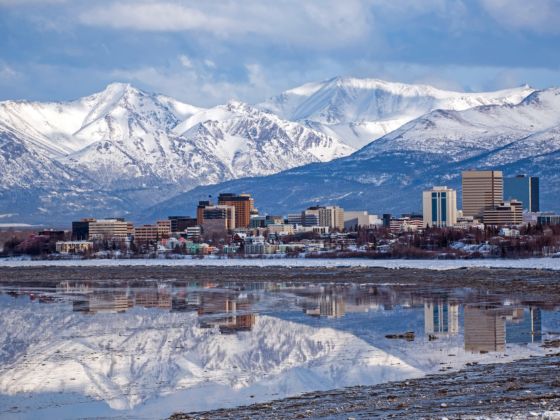

Anchorage, Alaska's largest city, is also home to nearly half of the entire state's population.
Its south-central location makes it an ideal gateway to the rest of the state, as most of the traffic going to or coming from Alaska originates or terminates here. In fact, the highest number of pilots-per-capita in the world is here, and Lake Hood is the world's busiest seaport base for float planes.
Temperatures are surprisingly mild, given its sub-arctic climate zone. January averages hover around 10 degrees fahrenheit, and summer highs push 75. Its lush, deciduous/evergreen flora give off greens reminiscent of Ireland, but to see Anchorage's most remarkable beauties one must see them under a fresh blanket of snow.
One of the best ways to understand Anchorage is that it's not simply a city in the midst of the wild—in fact, it's quite the opposite. Over 250 miles of scenic trails exist within the city proper itself, and moose and other wildlife encounters are not uncommon. And given that Alaska's midnight sun keeps the summer months no darker than twilight, one could theoretically hike at any hour of the day from mid-May to mid-July. Kayakers and surfers: don't forget about the bore tide bearing down Turnagain Arm for a six-mile-plus ride.
Downtown Anchorage is easily walkable, and only short distances separate the metropolitan shopping district from Ship Creek, a popular salmon-fishing area within city limits. Fine dining co-exists peacefully alongside bars and saloons that would make cheechakos and sourdoughs alike feel at home. And that's the hope for visitors to Anchorage: that they would feel at home.
Chalets and cabins in the mountains and chic apartments with views of Denali.
Who's in for a road trip to the Great White North?
What to do with a day in Anchorage? We've got you covered.